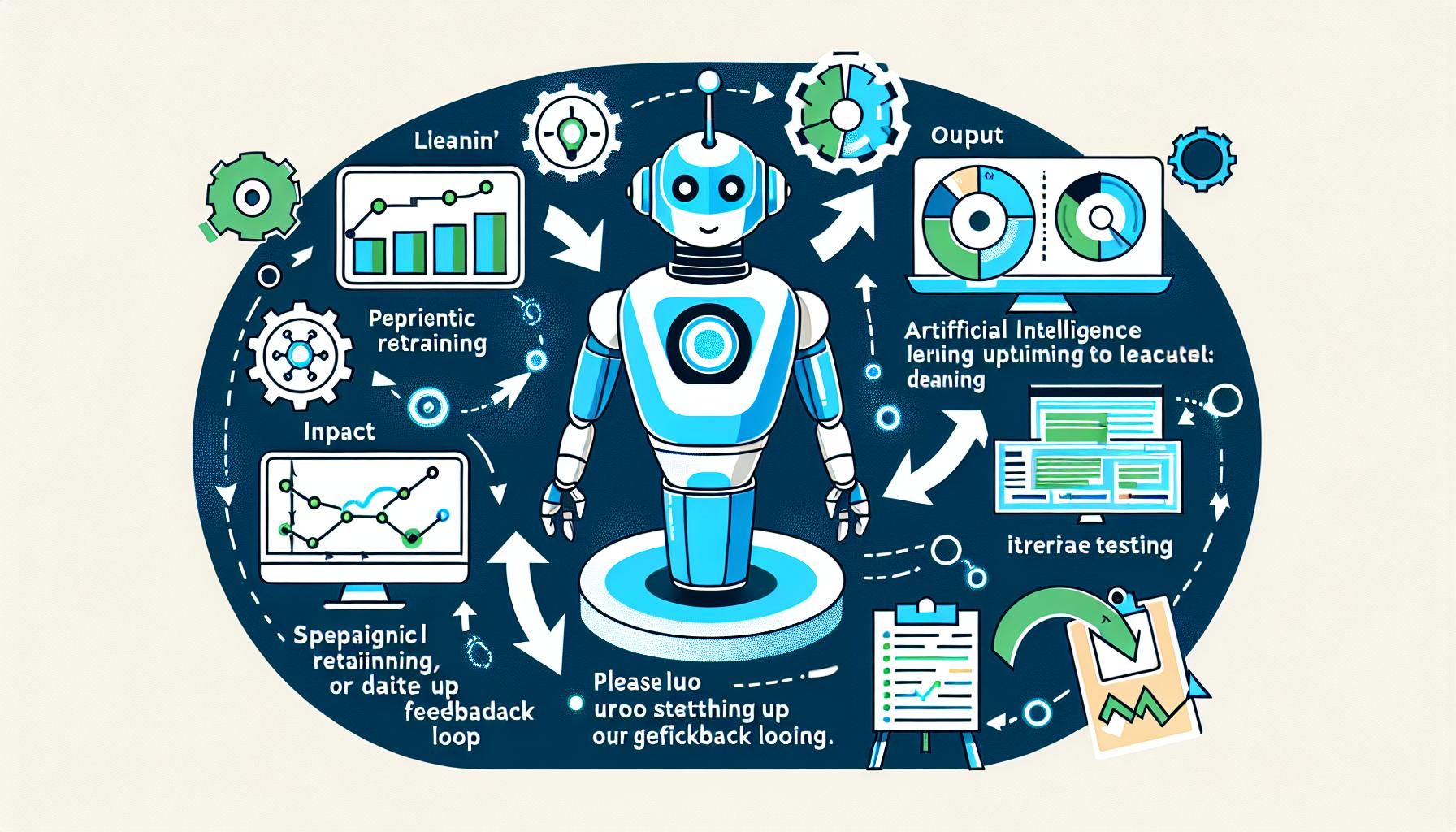Continuous Learning: Feedback Loops to Keep Your AI Assistant Up-to-Date

Introduction
In the rapidly evolving world of Artificial Intelligence, maintaining the relevance and effectiveness of AI assistants is paramount. Ensuring that these assistants remain up-to-date with current information, user needs, and market trends requires a continuous learning process. One of the most effective ways to achieve this is through feedback loops. In this article, we will explore the importance of feedback loops, various techniques such as periodic retraining based on user feedback, regular updates using new data inputs, and iterative testing. Business owners will also gain insights into how perpetual refinement can enhance user satisfaction and operational efficiency.
The Importance of Continuous Learning for AI Assistants
Continuous learning is crucial for AI assistants as it ensures they remain relevant and useful over time. Unlike static systems, AI needs to adapt and evolve to match the dynamic nature of human needs and technological advancements. Feedback loops facilitate this ongoing adaptation by incorporating new information and experiences into the AI's knowledge base, thus improving its performance and accuracy.
Periodic Retraining Based on User Feedback
One of the most effective methods for maintaining the relevance of an AI assistant is periodic retraining based on user feedback. Users interact with AI assistants in diverse ways, providing a wealth of data about their preferences, issues, and needs. By regularly analyzing this feedback, developers can identify areas where the AI may be falling short and retrain it to improve those areas. This process involves:
- Data Collection: Gathering user feedback through various channels such as surveys, direct interactions, and usage analytics.
- Data Analysis: Analyzing the collected data to identify patterns, common issues, and areas for improvement.
- Retraining: Using the insights gained from the analysis to update the AI's algorithms and knowledge base, ensuring it better meets user needs.
Regular Updates Using New Data Inputs
In addition to user feedback, incorporating new data inputs regularly is essential for keeping an AI assistant up-to-date. The world is constantly changing, and staying current with the latest information is vital for maintaining the AI's relevance. This can be achieved by:
- Continuous Data Integration: Regularly integrating new data sources, such as news feeds, social media updates, and industry reports, into the AI's knowledge base.
- Automated Updates: Setting up automated systems to update the AI with the latest data, ensuring it has access to current information without manual intervention.
- Validation and Testing: Periodically validating the new data to ensure its accuracy and relevance before incorporating it into the AI.
Iterative Testing to Maintain Relevance
Iterative testing is a critical component of the continuous learning process for AI assistants. By regularly testing the AI's performance and making necessary adjustments, developers can ensure it remains effective and relevant. This involves:
- A/B Testing: Comparing different versions of the AI to determine which performs better in meeting user needs.
- User Testing: Conducting tests with real users to gather feedback on the AI's performance and identify areas for improvement.
- Performance Monitoring: Continuously monitoring the AI's performance metrics to detect any declines or issues that need addressing.
Strategies for Setting Up Effective Feedback Mechanisms
Establishing effective feedback mechanisms is crucial for capturing the evolving needs of users and market trends. Some strategies to consider include:
- Multichannel Feedback Collection: Implementing various channels for users to provide feedback, such as in-app surveys, email, social media, and direct interactions.
- Regular Feedback Analysis: Scheduling regular intervals for analyzing the collected feedback to identify patterns and insights.
- User Engagement: Actively engaging with users to encourage feedback and demonstrate that their input is valued and acted upon.
- Feedback Loop Implementation: Establishing a structured process for incorporating user feedback into the AI's development and improvement cycle.
Business Benefits of Perpetual Refinement
For business owners, the perpetual refinement of AI assistants through continuous learning and feedback loops offers several significant benefits:
- Enhanced User Satisfaction: By continually updating and improving the AI based on user feedback, businesses can ensure higher levels of user satisfaction and loyalty.
- Operational Efficiency: An up-to-date AI assistant can handle tasks more efficiently, reducing the workload on human employees and increasing overall productivity.
- Competitive Advantage: Businesses that invest in continuous learning for their AI assistants can stay ahead of competitors by offering more relevant and effective AI solutions.
- Adaptability: A continuously learning AI is better equipped to adapt to changing market conditions and user needs, ensuring long-term success.
Conclusion
In conclusion, maintaining an ongoing feedback loop is essential for the continuous learning and success of AI assistants. By incorporating techniques such as periodic retraining based on user feedback, regular updates using new data inputs, and iterative testing, businesses can ensure their AI assistants remain relevant, effective, and user-friendly. Setting up effective feedback mechanisms and embracing perpetual refinement will enhance user satisfaction, operational efficiency, and provide a competitive edge in the market. Embrace the power of continuous learning to keep your AI assistant up-to-date and responsive to the ever-changing world.




